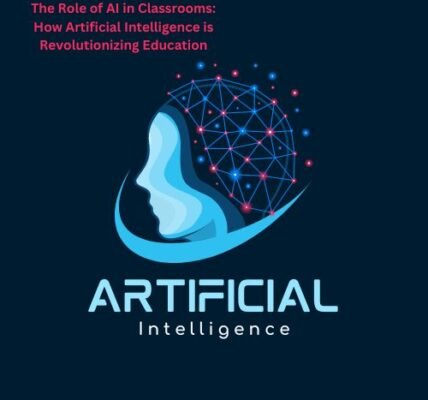Education is evolving. The debate of STEM vs STEAM has sparked important conversations among educators. Should art be part of the core curriculum along with science, technology, engineering, and math? Many argue that art fosters creativity and innovation, which are essential in today’s world. But others believe the focus should remain on STEM subjects to keep up with technological advancements. Let’s explore the STEM vs STEAM debate and see if art truly belongs in modern education.
1. What is STEM?
STEM stands for science, technology, engineering, and math. These fields have been the focus of modern education for years. Educators push for STEM because these subjects are critical for economic growth. They prepare students for high-demand careers in fields like software development, engineering, data analysis, and healthcare. The goal of STEM education is to produce problem-solvers, critical thinkers, and innovators.
2. What is STEAM?
STEAM adds art to the traditional STEM subjects. This approach recognizes the importance of creativity and design in solving complex problems. STEAM education includes drawing, music, design, and other art forms. It encourages students to think outside the box and use both their logical and creative minds.
Advocates of STEAM believe that adding art promotes a well-rounded education. It helps students develop skills that are valuable in a variety of industries, including architecture, advertising, and product design.
3. The Importance of STEM in Modern Education
STEM education has been a cornerstone of modern education. Governments and schools emphasize these subjects because of their role in driving innovation. Many of the world’s technological advancements come from STEM fields. For example, breakthroughs in medicine, artificial intelligence, and renewable energy all stem from science and engineering.
STEM education provides students with the knowledge and skills needed to compete in the global workforce. It teaches critical thinking, problem-solving, and technical skills. These are essential for success in today’s job market. Many educators believe that focusing on STEM subjects will help students keep up with rapid technological changes.
4. The Argument for Adding Art to STEM
While STEM is important, adding art to the mix brings unique benefits. Supporters of STEAM argue that creativity is just as valuable as technical skills. Art encourages students to see the world differently. It helps them approach problems in innovative ways.
In fact, some of the greatest inventions and designs come from blending science with art. Think about iconic products like the iPhone. Its success comes from combining cutting-edge technology with sleek, user-friendly design. Without art, the world may miss out on innovative solutions to real-world problems.
5. Benefits of STEAM in Education
STEAM offers several benefits that go beyond STEM. Here are some reasons why art should be a core element in education:
a. Fosters Creativity and Innovation
Art inspires students to be creative. In a STEAM classroom, students can use their imagination to solve problems. They can create prototypes, experiment with design, and explore new concepts. This fosters innovation, which is essential in industries like tech and engineering.
b. Promotes Collaboration
STEAM encourages collaboration between students with different strengths. A student skilled in math can team up with a classmate who excels in art. Together, they can create something unique that neither could do alone. Collaboration is a vital skill in the workplace, where diverse teams come together to create successful projects.
c. Encourages Critical Thinking
While STEM focuses on logical thinking, art adds a layer of critical thinking. In STEAM, students learn to evaluate their ideas and question assumptions. This helps them approach problems from multiple perspectives, leading to more effective solutions.
d. Develops Communication Skills
Art encourages students to express their ideas visually. Whether they are designing a product or illustrating a scientific concept, they learn how to communicate complex ideas in simple, visual ways. This is valuable in fields like marketing, architecture, and engineering, where design and communication are key.
e. Prepares Students for a Changing Job Market
The job market is constantly evolving. New industries are emerging that require both technical and creative skills. STEAM prepares students for careers in fields like game design, virtual reality, robotics, and more. These careers require a combination of logic and creativity.
6. Challenges of Implementing STEAM
While STEAM has many benefits, there are challenges to adding art to the curriculum. Here are some of the concerns:
a. Budget Constraints
Adding art programs can be expensive. Schools often have limited budgets, and many are already struggling to fund STEM programs. Hiring art teachers, buying supplies, and creating new courses require resources that some schools may not have.
b. Lack of Teacher Training
Teachers need proper training to integrate art with STEM subjects. Many educators are comfortable teaching science or math, but may not have experience with art or design. Professional development and collaboration between STEM and art teachers are essential for STEAM to work.
c. Balancing Curriculum
Some educators worry that adding art will take time away from core STEM subjects. With limited class time, balancing the curriculum can be difficult. Schools must find a way to include art without sacrificing important STEM content.
7. The Future of STEAM in Education
The STEM vs STEAM debate will continue, but the future looks bright for STEAM. As industries evolve, creativity will become more valuable. Employers are already seeking candidates with both technical and creative skills. STEAM education equips students with the tools they need to succeed in a variety of careers.
In the coming years, more schools may adopt STEAM programs. Educators are recognizing the value of creativity in solving complex problems. STEAM provides students with a well-rounded education that prepares them for the challenges of the future.
Conclusion
The debate of STEM vs STEAM is important for the future of education. While STEM focuses on technical skills, STEAM adds the creativity needed for innovation. Art encourages students to think critically, collaborate, and approach problems from different angles. As the world continues to change, STEAM education may offer the balance needed to prepare students for success in both traditional and emerging fields.
Educators, parents, and policymakers must consider the role of art in education. Should art be a core element? Based on the benefits, it’s clear that STEAM provides students with a richer, more dynamic learning experience. The future of education may not just be about science and math but about creativity, innovation, and the blending of both.





